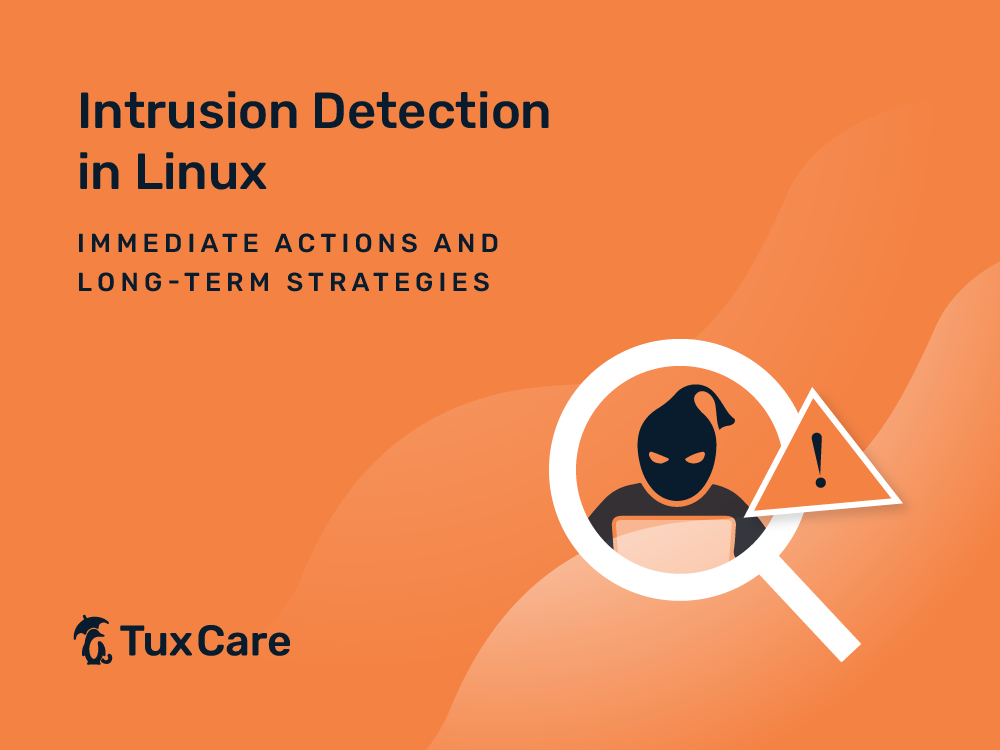Intrusion Detection in Linux: Protecting Your System from Threats
Safeguarding your Linux environment from potential threats is more critical than ever. Whether you’re managing a small server or an extensive network, having hands-on knowledge of intrusion detection systems (IDS) is essential. IDS tools play a vital role in maintaining the security and integrity of your system. This guide will walk you through the practical steps of setting up, maintaining, and analyzing IDS logs in Linux, providing you with the hands-on skills you need to protect your systems effectively.
What Is an Intrusion Detection System (IDS)?
An intrusion detection system (IDS) is a security mechanism that monitors network or system activities for malicious actions or policy violations. It helps in identifying potential security breaches, including both external attacks and internal misuse. IDS can be classified into two main categories:
- Network-based IDS (NIDS): Monitors network traffic for suspicious activity.
- Host-based IDS (HIDS): Monitors the behavior of a specific host or device.
Both types of intrusion detection systems are essential in a comprehensive security strategy, and their deployment depends on your specific requirements and infrastructure.
Why Do You Need an IDS for Linux?
Linux systems, known for their customizability and security, are not immune to attacks. An intrusion detection system provides an additional layer of defense, ensuring that even if an attacker bypasses your primary security measures, you can still detect and respond to malicious activities. Key benefits of using intrusion detection systems include:
- Early Detection: Identifying threats before they can cause significant damage.
- Compliance: Meeting regulatory requirements and standards.
- Forensic Analysis: Providing detailed logs that can be used for investigating security incidents.
For more detailed steps on securing your Linux environment, check out this step-by-step guide.
Setting Up an Intrusion Detection System in Linux
Setting up an IDS on a Linux system involves several steps. Here, we’ll focus on two popular intrusion detection systems: Snort (NIDS) and OSSEC (HIDS).
Installing Snort
Snort is a powerful open-source network intrusion detection system. Here’s how to set it up:
Update Your System:
sudo apt-get update
sudo apt-get upgrade
Install Snort:
sudo apt-get install snort
Configure Snort:
Edit the Snort configuration file, usually located at /etc/snort/snort.conf. Set up your network variables and specify the rule sets you want to use.
Start Snort:
sudo systemctl start snort
Verify Installation:
snort -V
Configuring Snort Rules
Configuring Snort rules is a critical step in making sure that your intrusion detection system is tailored to your network environment. Snort uses a series of rules to detect possible intrusions. These rules can be customized to suit your specific security needs. The rules are typically located in the /etc/snort/rules directory.
Here’s a basic example of a Snort rule:
alert tcp any any -> 192.168.1.0/24 80 (msg:”HTTP Traffic”; sid:1000001;)
This rule will generate an alert for any TCP traffic going to any IP address in the 192.168.1.0/24 network on port 80, which is typically used for HTTP traffic.
Installing OSSEC
OSSEC is a comprehensive open-source host-based intrusion detection system. Follow these steps to install and configure OSSEC:
Download OSSEC:
wget https://github.com/ossec/ossec-hids/archive/3.6.0.tar.gz tar -xvzf 3.6.0.tar.gz cd ossec-hids-3.6.0
Run the Installation Script:
sudo ./install.sh
Follow the Prompts:
During the installation, you will be prompted to configure various options such as email notifications, enabling agentless monitoring, and more.
Start OSSEC:
sudo /var/ossec/bin/ossec-control start
Verify Installation:
sudo /var/ossec/bin/ossec-control status
Configuring OSSEC
After installing OSSEC, the next step is configuring it to fit your environment. The main configuration file for OSSEC is ossec.conf, typically located in the /var/ossec/etc/ directory. This file allows you to set up log monitoring, rootkit detection, and active response rules.
For example, to monitor the /var/log/auth.log file for login attempts, you would add the following to your ossec.conf:
<localfile> <log_format>syslog</log_format> <location>/var/log/auth.log</location> </localfile>
Maintaining Your IDS
Regular maintenance of your intrusion detection systems is essential to ensure their effectiveness. Here are some best practices:
Regular Updates
Keep your IDS software and rules up to date. Regular updates help in identifying new threats and vulnerabilities. For Snort, update rules with:
sudo snort -u
For OSSEC, you can update rules manually or set up a cron job to automate the process.
Fine-Tuning Rules
Customize and fine-tune your IDS rules to minimize false positives and ensure accurate detection. Analyze logs regularly to identify patterns and adjust rules accordingly. This is particularly important as network environments and threat landscapes evolve.
Backup Configurations
Regularly backup your IDS configurations and logs. This ensures that you can quickly restore your IDS in case of a failure or attack. Automated backup solutions or scripts can be set up to handle this process, ensuring that you always have the latest configurations safely stored.
Analyzing IDS Logs
Effective analysis of IDS logs is crucial for identifying and mitigating threats. Here are some tips:
Centralized Logging
Use centralized logging to aggregate logs from multiple sources. Tools like Elasticsearch, Logstash, and Kibana (ELK Stack) can help in creating a centralized log management system. This setup allows you to search, analyze, and visualize logs from a single interface, making it easier to identify potential threats.
Automated Analysis
Leverage automated tools and scripts to analyze logs. For example, you can use tools like Splunk or Graylog to automate log analysis and generate alerts for suspicious activities. These tools can be configured to notify you immediately when specific patterns or anomalies are detected, enabling a faster response to potential security incidents.
Manual Review
Regularly review logs manually to ensure no threats are missed. Look for unusual patterns, repeated failed login attempts, and any deviations from normal behavior. While automated tools are excellent for handling large volumes of data, manual review adds an additional layer of scrutiny, ensuring that subtle threats are not overlooked.
Using Advanced Analytics
Consider using advanced analytics and machine learning to enhance your log analysis capabilities. These technologies can help identify patterns and anomalies that might be missed by traditional methods. By integrating machine learning models, you can improve the accuracy of threat detection and reduce the number of false positives.
To further understand the intricacies of intrusion detection systems, consider exploring more resources, such as this comprehensive guide by IBM.
By taking these proactive measures, you can enhance the security of your Linux systems and ensure a robust defense against potential threats. Stay vigilant and keep your IDS well maintained to protect your valuable data and infrastructure.
Advanced Topics in IDS
For those looking to explore more deeply into intrusion detection systems, there are several advanced topics worth exploring:
Integration with SIEM Systems
Integrating your IDS with a Security Information and Event Management (SIEM) system can provide a more comprehensive security solution. SIEM systems collect and analyze log data from various sources, including IDS, firewalls, and other security tools, providing a holistic view of your security posture.
Machine Learning in IDS
Machine learning algorithms can significantly enhance the capabilities of intrusion detection systems. By training models on historical log data, machine learning can help predict and identify new types of threats, improving the overall effectiveness of your IDS.
Threat Intelligence Feeds
Incorporating threat intelligence feeds into your IDS can provide real-time updates on emerging threats. These feeds contain information about known malicious IP addresses, domains, and other indicators of compromise (IOCs) that can help in identifying and blocking threats before they impact your system.
Custom IDS Solutions
For unique environments, a custom IDS solution may be required. This involves developing tailored rules and configurations that match the specific needs of your organization. Custom IDS solutions can provide higher accuracy and better performance in detecting threats relevant to your infrastructure.
By continuously enhancing your knowledge and capabilities in intrusion detection systems, you can stay ahead of potential threats and maintain a secure Linux environment. Regularly updating your skills and tools is essential in the ever-evolving field of cybersecurity.
Final Thoughts
Intrusion detection systems are a crucial component of any security strategy for Linux environments. Whether you choose network-based or host-based systems, implementing and maintaining effective IDS tools will help you detect and respond to threats promptly. By following the guidelines provided in this blog post, you can set up, maintain, and analyze your IDS logs to ensure your systems are well protected. Stay proactive and informed to keep your Linux environment secure.



 Documentation
Documentation Login
Login




